Key benfits of MiniWear are:
- Open source
- Modular Electronics
- Supporting the maker movement
- Combines 3d printing with DIY miniature and wearable electronics
- Electronics modules can be stacked, daisy chained, sown, soldered and will fit into a standard breadboard
- Sensor modules include: heart rate sensor, non contact temperature sensor, 9 axis motion sensor, and a UV, IR and light sensor.
- Some of the smallest electronics on the market, measuring less than 2cm X 2cm (0.79” X 0.79”)
- Arduino based bluetooth low energy microcontroller with ibeacon capabilities
- Can communicate with your computer, tablet or phone
- Uses I2C to communicate to modules (Only needs 4 pins: VCC, GND, SDA, SCL)
Why Is It Better Than Other Wearable Boards?
MiniWear is the smallest development platform, with the most possible ways of connecting modules together, and still fits into a solderless breadboard. Making it a great platform to develop with. The range of freely downloadable cases is also a major plus, not to mention that it is the best value microcontroller if you are interested in using bluetooth low energy to connect to you computer, laptop, tablet or phone. If you don't need bluetooth, then i recommend that you try one of the other boards listed above.
Current Electronics Modules
These are some of the smallest modules around, measuring less than 2cm X 2cm (0.79" X 0.79"), and so are perfect for miniature and wearable projects. I have also chosen some of most interesting sensors i could find, from heart rate sensing to measuring temperature at a distance. The addition of the RFDuino Bluetooth Low Energy (BLE) module and the OLED screen gives you so many possible project options.
Every module can be connected to almost any microcontroller, such as Arduino's, PIC's, and Mbeds. This is because each module uses I2C for communication, which is easy to use once you know what your doing, and it only uses 2 pins (SDA & SCL) plus the standard power and ground pins. This allows me to make the modules as small as possible, and yet still be able to attach them in hundreds of different configurations.
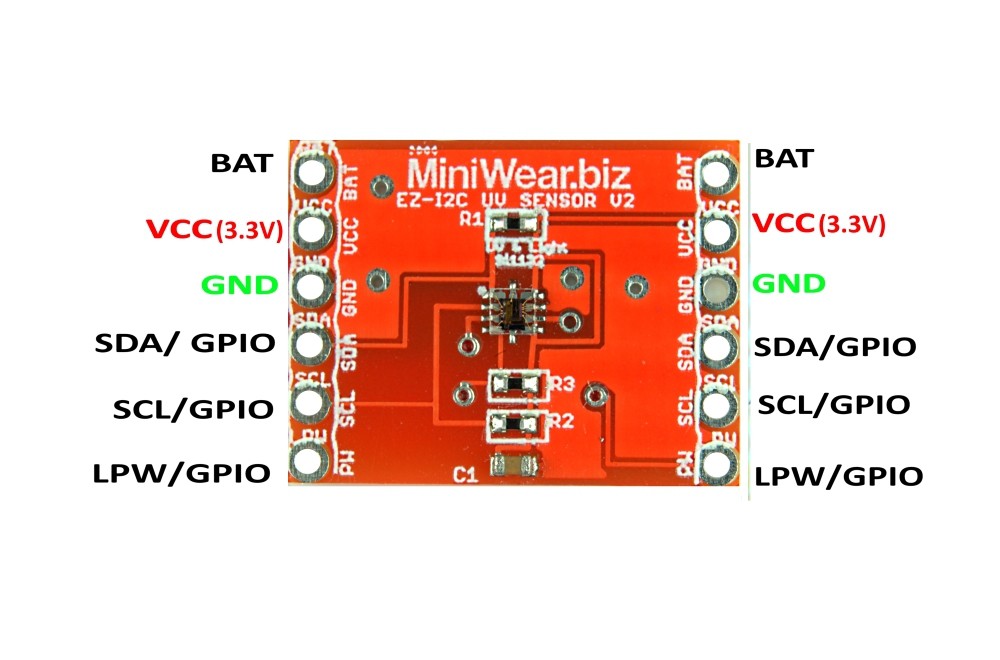
The MiniWear modules have 6 pins in total, the 2 required for I2C, 1 Ground, 1 Power, 1 extra general purpose pin that i have labelled LPW in case of extra Low PoWer modes (but it can be used for anything). There is also a BAT pin, which batteries are attached to so that i can add multiple batteries, regulate their power centrally, switch them all on/off, and recharge them all at the same time. It also opens up the possibility for alternative power modules in the future.
Every module is powered by 3.3V and has two sets of identical pins, this makes it super easy for connecting the modules together. Each module is also exactly the same width, and when combined with special headers, they can be connected in many different configurations, giving you many options for your projects.

How To Connect The Electronics Together?
Make Your Projects Look Cool With 3d Printed Cases
To take your projects to the next level and make your friends, family, teachers and colleagues amazed at your creative genius :) I have designed cases that you can download and print on your 3d printer, or order from a 3d printing service. These are absolutely free to download and alter so that you can use them as a base to create any style case you want: Fashionable, Functional or high tech, its up to you!
MiniWear Module Details
MiniWear BLE RFduino - The MiniWear RFduino is a Bluetooth 4.0 Low Energy BLE RF Module that easily connects to our sensor modules, and is compatible with the Arduino IDE and programming language. It has a built in temperature sensor, and i have added a 3.3V regulator so that you can power it with up to a 5.5V maximum. There is also a red LED to test that your projects are working,...
Read more » James Cannan
James Cannan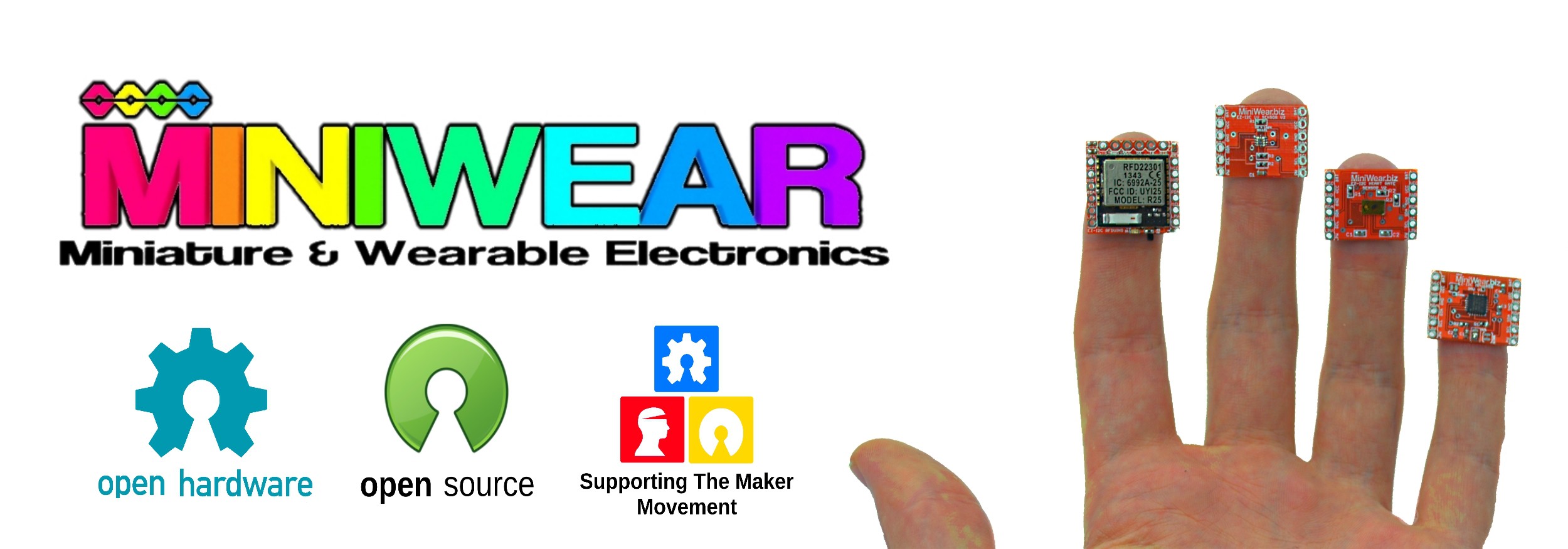
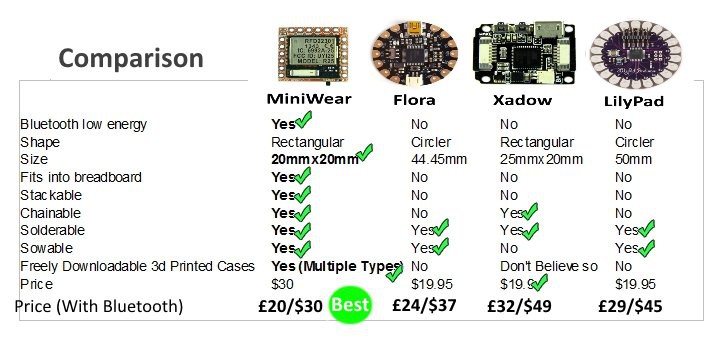
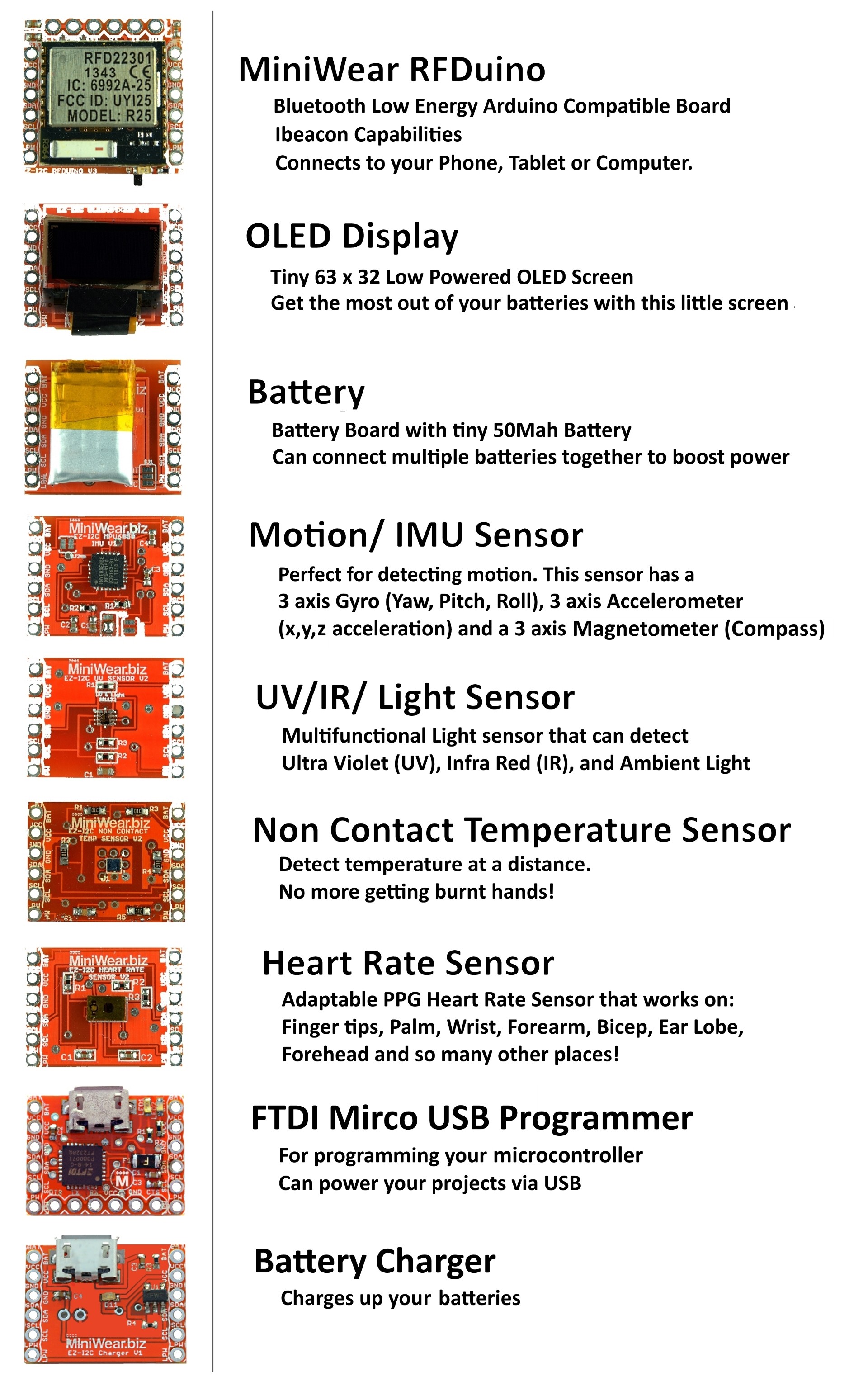
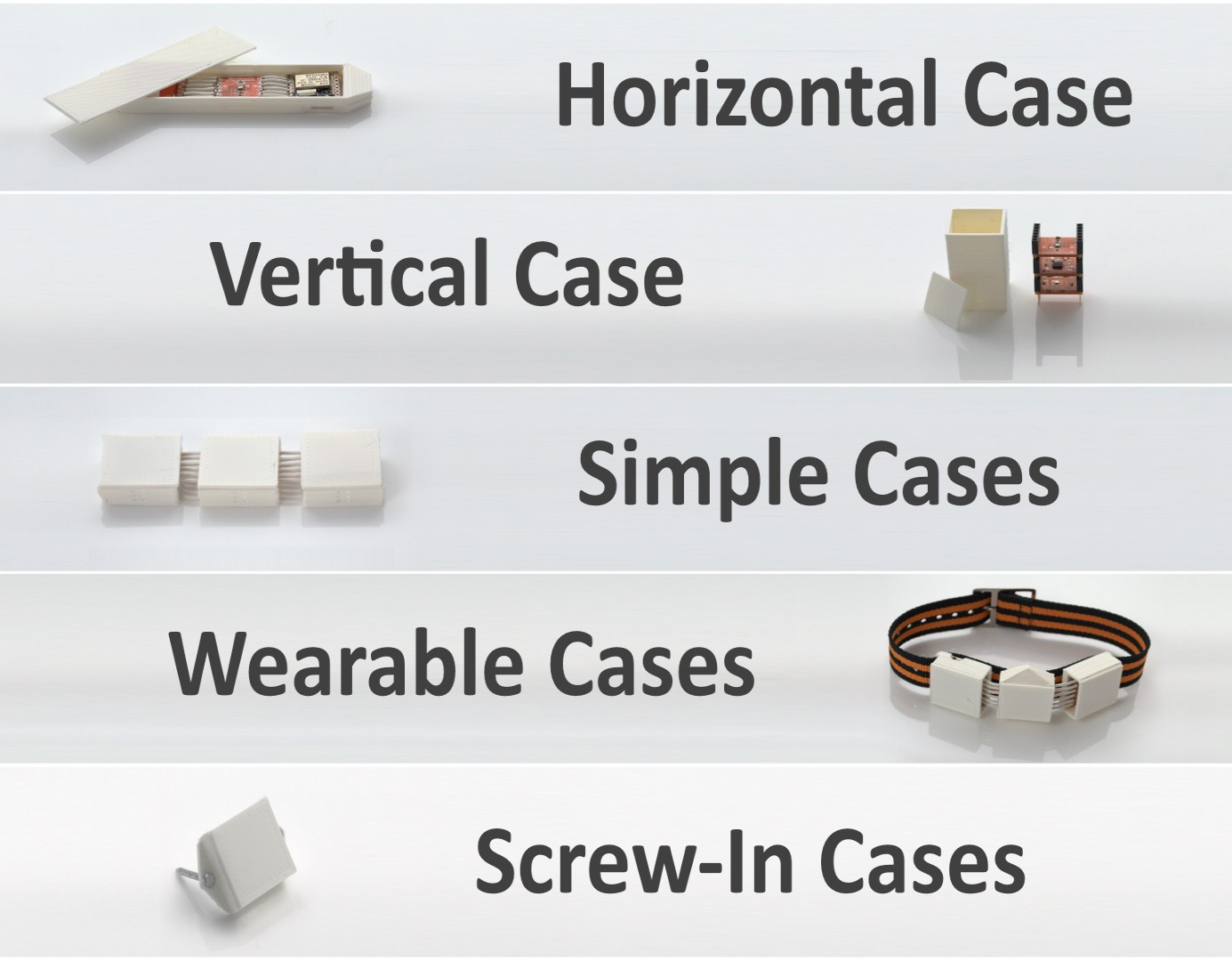
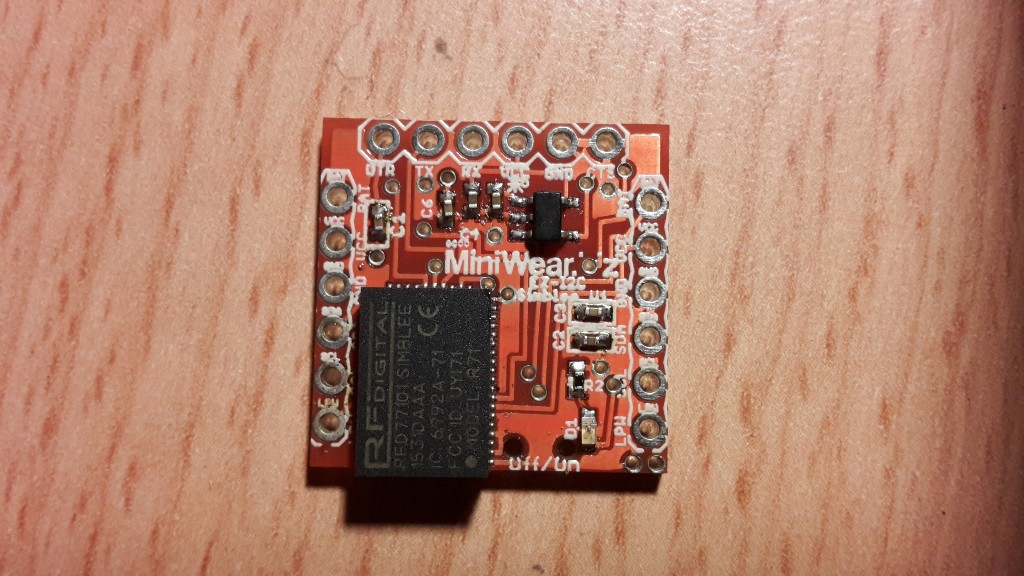



MiniWear looks great. I like the modular approach and I will recommend this to young makers to encourage them into microelectronics. -Frank